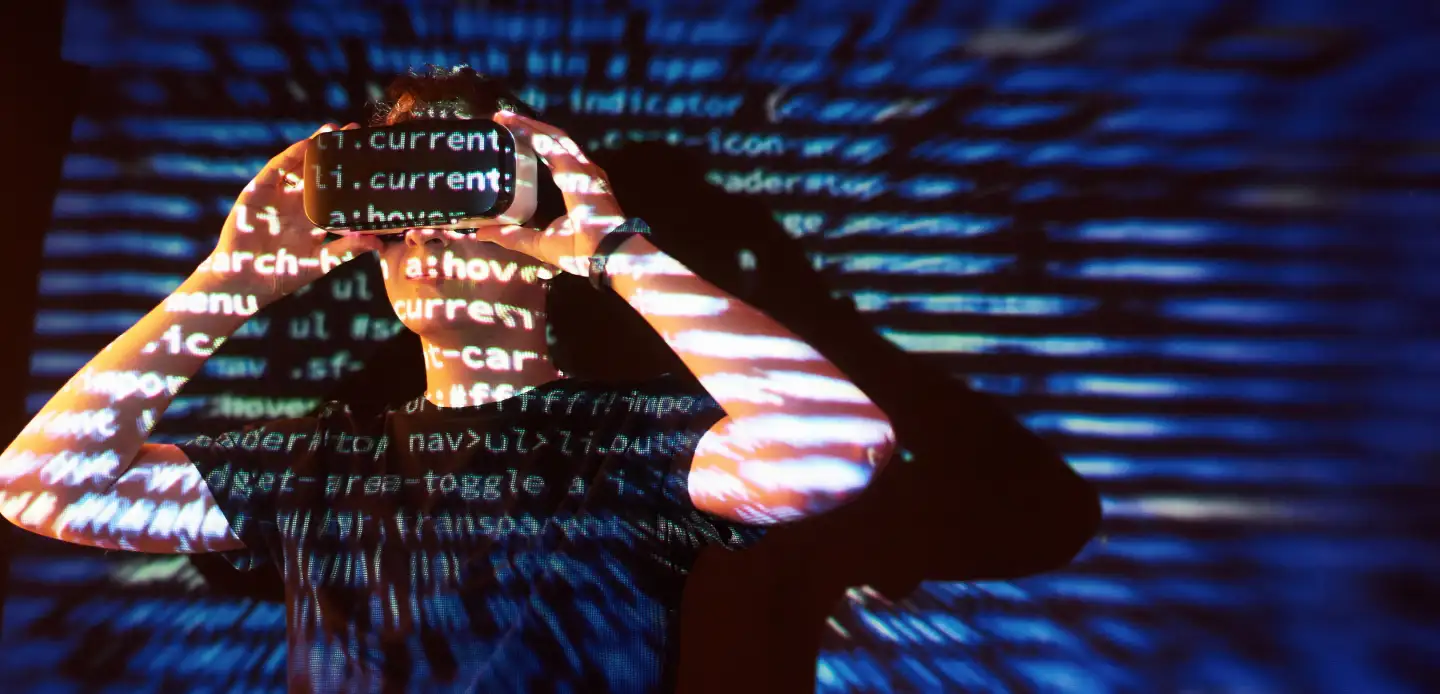Artificial intelligence has crafted content creation, but with this advancement comes the critical need to distinguish between human and AI-generated text. Understanding how do AI detectors work has become essential for educators, content creators, and professionals navigating the digital landscape. These sophisticated tools analyze writing patterns, sentence structures, and linguistic characteristics to estimate whether content originated from artificial intelligence or human authors.
AI detection technology employs machine learning algorithms trained on vast datasets containing both human-written and AI-generated content. By examining factors like predictability, sentence variation, and stylistic consistency, these tools provide probability scores indicating potential AI involvement. However, the detection process involves complex methodologies that extend far beyond simple pattern matching, incorporating advanced natural language processing and statistical analysis techniques.
What Are AI Detectors and Why Do They Matter
AI detectors are specialized software tools designed to analyze text and estimate the likelihood that content was generated by artificial intelligence rather than written by humans. These systems utilize machine learning models trained on extensive datasets to identify distinctive patterns, structures, and characteristics that differentiate AI-generated content from human-authored text.
The importance of AI detection spans multiple industries and applications. Educational institutions rely on these tools to maintain academic integrity, ensuring students submit original work that reflects their understanding. Professional organizations use AI detectors to verify content authenticity and maintain brand voice consistency. In journalism and media, these tools help combat misinformation and preserve editorial standards.
The growing sophistication of AI writing tools has made detection increasingly challenging yet more critical than ever. Key applications include:
- Academic integrity monitoring in schools and universities
- Content verification for publishers and media organizations
- Quality assurance for marketing and business communications
- Fraud prevention in professional and legal contexts

How Do AI Detectors Work: Core Technologies and Methods
The foundation of AI detection relies on machine learning algorithms that analyze linguistic patterns and structural elements within text. These systems employ natural language processing (NLP) to understand context, syntax, and semantic relationships that distinguish human writing from algorithmic generation.
Machine learning models powering AI detectors undergo extensive training on datasets containing millions of text samples from both human authors and various AI generators. This training enables the systems to recognize subtle differences in word choice, sentence construction, and stylistic consistency that characterize each type of content.
Detection methods encompass several sophisticated approaches
- Pattern recognition algorithms that identify recurring structural elements
- Statistical analysis of word frequency and distribution patterns
- Metadata examination for hidden markers embedded by AI tools
- Comparative analysis against databases of known AI-generated content
- Linguistic feature extraction focusing on syntax and semantic coherence
Key Detection Techniques: Perplexity, Burstiness, and Pattern Analysis
Two fundamental concepts drive modern AI detection technology: perplexity and burstiness. Perplexity measures how predictable a sequence of words appears to the detection algorithm. Human writing typically exhibits higher perplexity because people naturally use unexpected word choices, creative expressions, and varied linguistic patterns that surprise algorithmic expectations.
AI-generated text often demonstrates lower perplexity due to its tendency to follow common linguistic patterns found in training data. This predictability stems from AI models selecting statistically probable word sequences rather than employing the creative unpredictability characteristic of human expression.
Burstiness refers to variations in sentence length and structural complexity throughout a document. Human authors naturally alternate between short, punchy sentences and longer, complex constructions, creating dynamic rhythmic patterns. AI-generated content frequently maintains more uniform sentence structures and consistent complexity levels.
Advanced detection systems analyze these factors collectively
- Sentence structure uniformity versus natural variation patterns
- Repetitive phrase usage indicating algorithmic generation
- Linguistic creativity levels and expression originality
- Contextual coherence and thematic consistency throughout documents
Educational institutions increasingly rely on AI detection tools to maintain academic integrity standards. What ai detector does turnitin use has become a common question among educators seeking reliable detection capabilities. Turnitin has integrated AI detection features into their existing plagiarism detection platform, combining both services for comprehensive content analysis.
Many educators also utilize standalone detection tools like GPTZero, which was specifically designed for educational applications. Writer.com ai detector represents another popular choice, offering specialized features for academic writing assessment. These tools provide sentence-by-sentence analysis capabilities that help instructors identify specific sections potentially generated by AI.
The selection of detection tools often depends on institutional needs and integration requirements. Popular options include:
- Turnitin integrated AI detection alongside plagiarism checking
- GPTZero for specialized academic writing analysis
- Writer ai content detector for comprehensive content evaluation
- Grammarly AI detection features combined with grammar checking
- Specialized ai short story grader tools for creative writing assessment
Understanding AI Detection Accuracy and Limitations
AI detection accuracy varies significantly based on multiple factors including text length, AI model sophistication, and writing style characteristics. Most reputable detection tools achieve accuracy rates between 85-99% under optimal conditions, but real-world performance often differs from laboratory testing environments.
Several factors impact detection reliability. Short text passages provide insufficient data for accurate analysis, while longer documents offer more patterns for evaluation. Advanced AI models increasingly produce human-like writing that challenges detection algorithms. Mixed content combining AI generation with human editing presents particular difficulties for accurate classification.
Detection limitations include inherent challenges that users must understand:
- False positives occur when human writing is incorrectly flagged as AI-generated
- False negatives happen when AI content escapes detection
- Bias against certain writing styles, particularly non-native English speakers
- Difficulty detecting sophisticated AI models and heavily edited AI content
- Probabilistic results rather than definitive proof of AI usage
AI Detectors vs Plagiarism Checkers: Key Differences
Understanding the distinction between AI detectors and plagiarism checkers helps users select appropriate tools for their specific needs. What ai checker does turnitin use combines both technologies, but each serves different purposes in content verification processes.
AI detectors analyze writing patterns and linguistic characteristics to estimate artificial intelligence involvement in content creation. They examine factors like predictability, sentence structure variation, and stylistic consistency without comparing text against external sources.
Plagiarism checkers compare submitted text against vast databases of published content, academic papers, and online sources to identify matching or similar passages. These tools focus on detecting copied content rather than analyzing generation methods.
The key operational differences
- AI detectors assess generation methodology through pattern analysis
- Plagiarism checkers identify content similarity through database comparison
- AI detection provides probability scores for algorithmic generation
- Plagiarism detection offers specific source matches and similarity percentages
- Combined tools provide comprehensive content authenticity assessment

FAQs
Q1: What is perplexity and burstiness, and why do they matter?
A1: Perplexity AI measures how predictable or expected the text is based on a model’s training—AI-generated text tends to have low perplexity. Burstiness captures variation in sentence length and complexity—human writers tend to mix long and short sentences, creating high burstiness. Detectors use these metrics to differentiate more “human-like” writing from AI-like patterns.
Q2: How accurate are current AI detectors at spotting AI writing?
A2: Accuracy varies significantly. Many tools perform below 80% accuracy overall, and some suffer from false positives—misclassifying human-written text as AI-generated—or false negatives when AI output is paraphrased. Studies show detection accuracy drops sharply when evasive editing strategies are used.
Q3: Can AI detectors unfairly flag non-native English writers?
A3: Yes. Research has demonstrated a bias: non-native English writing is sometimes misclassified as AI-generated due to linguistic style differences. Similarly, writing from neurodiverse individuals may also be flagged more frequently. That’s why manual review and context are critical when interpreting results.
A4: Detection methods for images and videos rely on forensic anomaly detection and watermarking. Tools like Google SynthID Detector analyze image pixels for hidden SynthID watermarks. Video and audio detectors look for inconsistent blinking, lighting, mouth movement, or background audio artifacts—methods still evolving and imperfect.
Q5: How should AI detectors be used in academic or professional settings?
A5: They should be part of a broader evaluation strategy—not the sole arbiter. Combine automated detection with plagiarism checkers, citations, review of writing tone, authenticity checks, and human judgment. Educators and employers are also advised to communicate clear policies about acceptable AI use and review content on a case-by-case basis.
Conclusion
Understanding how do AI detectors work empowers users to make informed decisions about content verification and authenticity assessment. These sophisticated tools employ machine learning algorithms, natural language processing, and statistical analysis to distinguish between human and AI-generated text through pattern recognition and linguistic analysis.
The technology relies on analyzing perplexity, burstiness, and structural patterns that differentiate human creativity from algorithmic predictability. While detection accuracy continues improving, limitations including false positives, bias issues, and evolving AI capabilities require careful interpretation of results.
AI detectors serve as valuable tools in educational, professional, and creative contexts, but they function best as part of comprehensive content verification strategies rather than standalone judgment systems. As artificial intelligence technology advances, detection methods will continue evolving to maintain effectiveness in preserving content authenticity and integrity standards.
Success in using AI detection technology requires understanding both capabilities and limitations while applying human judgment to interpret results appropriately. The future of content verification will likely involve increasingly sophisticated detection methods combined with transparent disclosure practices and responsible AI usage guidelines.
 Submit Your AI Tool For FREE!Showcase Your Innovation To Thousands Of AI Enthusiasts!
Submit Your AI Tool For FREE!Showcase Your Innovation To Thousands Of AI Enthusiasts! Submit Your AI Tool For FREE!Showcase Your Innovation To Thousands Of AI Enthusiasts!
Submit Your AI Tool For FREE!Showcase Your Innovation To Thousands Of AI Enthusiasts! Submit Your AI Tool For FREE!Showcase Your Innovation To Thousands Of AI Enthusiasts!
Submit Your AI Tool For FREE!Showcase Your Innovation To Thousands Of AI Enthusiasts! Submit Your AI Tool For FREE!Showcase Your Innovation To Thousands Of AI Enthusiasts!
Submit Your AI Tool For FREE!Showcase Your Innovation To Thousands Of AI Enthusiasts! Submit Your AI Tool For FREE!Showcase Your Innovation To Thousands Of AI Enthusiasts!
Submit Your AI Tool For FREE!Showcase Your Innovation To Thousands Of AI Enthusiasts!





No comments yet. Be the first to comment!